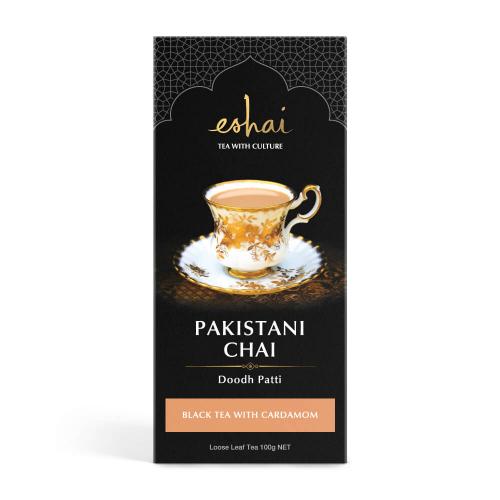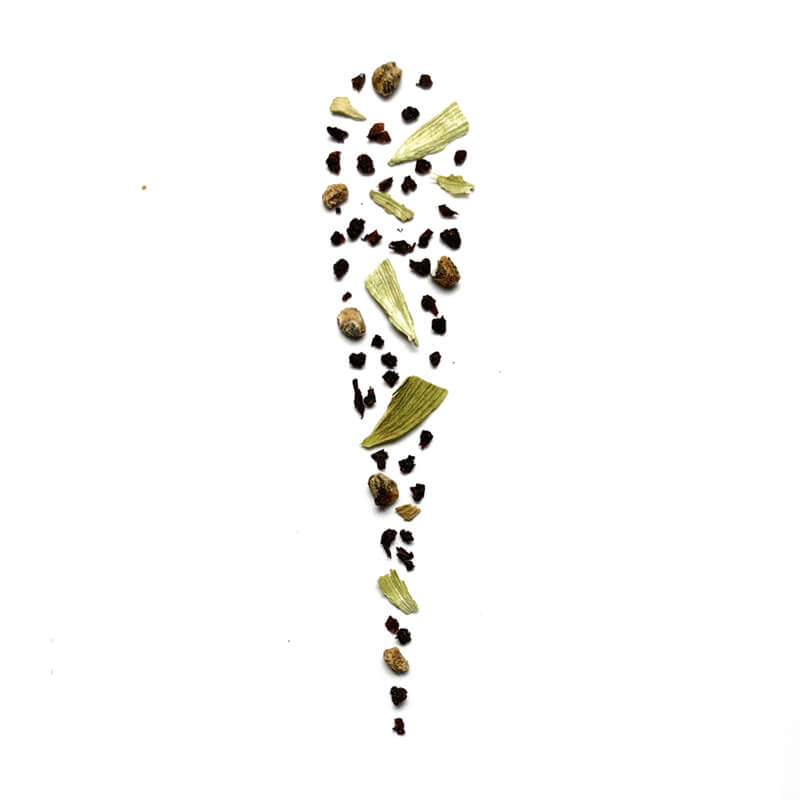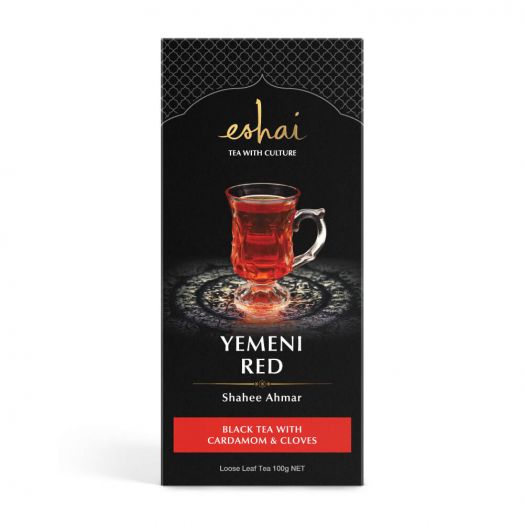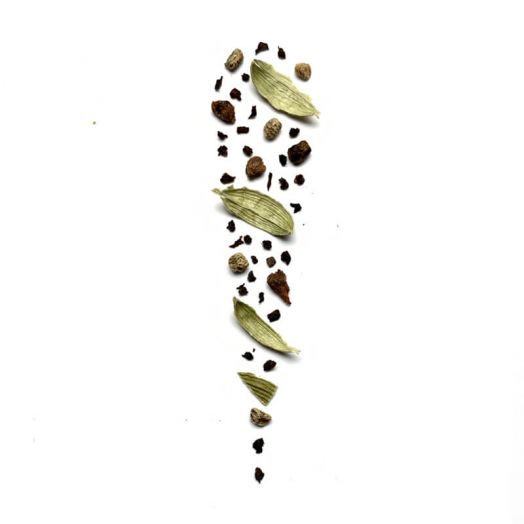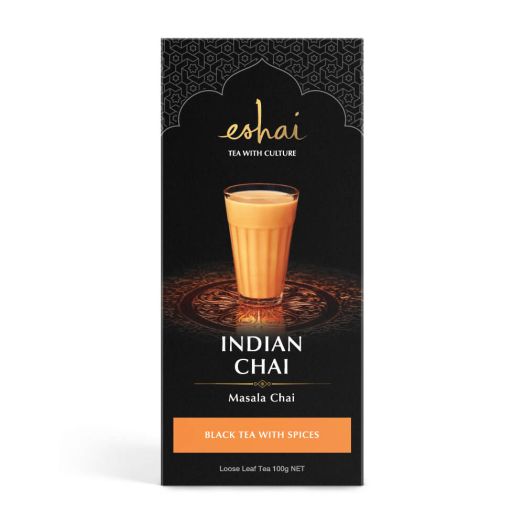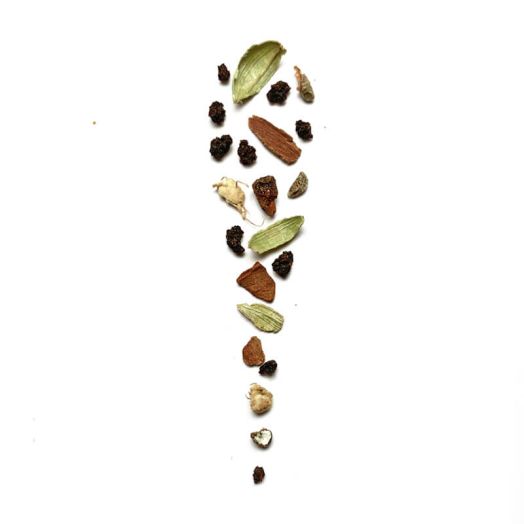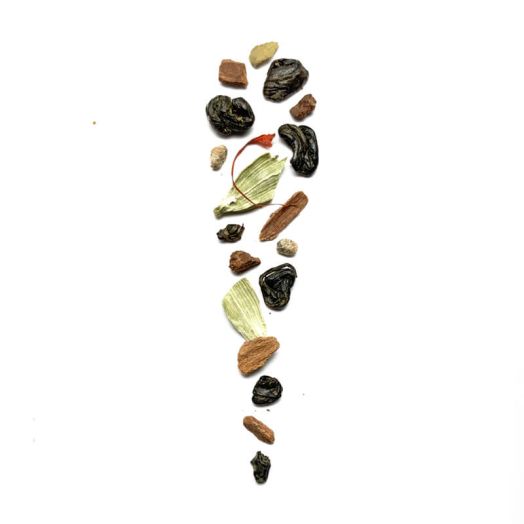What’s In The Packet?
vegan. gluten free. 100% natural. organic ingredients.
no preservatives or additives. artisanal.
hand-milled. hand-blended. hand-packaged
Feel
Blissed-out.
Bouncy.
Bright-eyed.
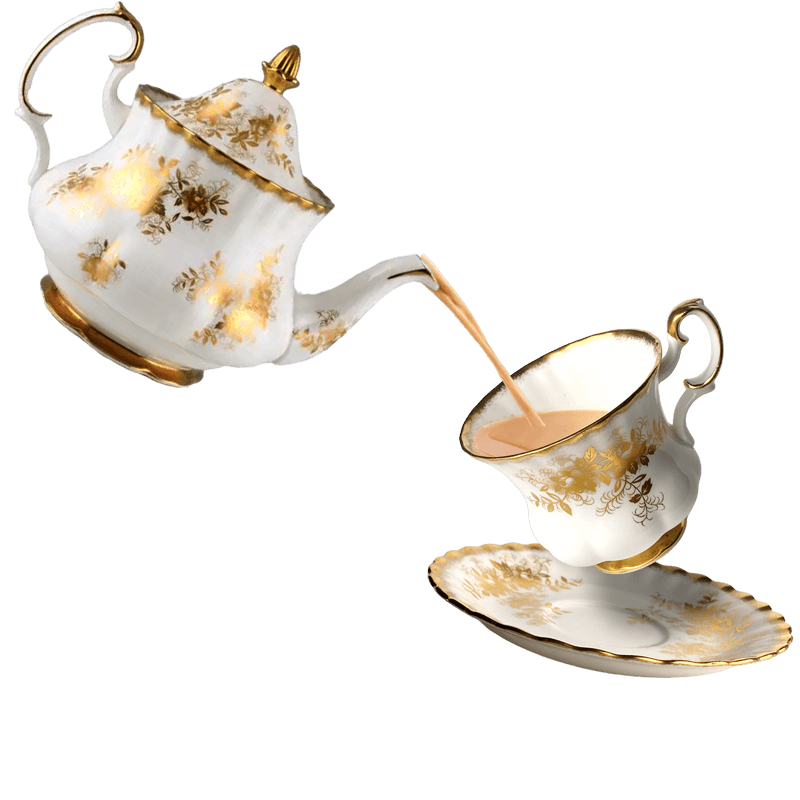
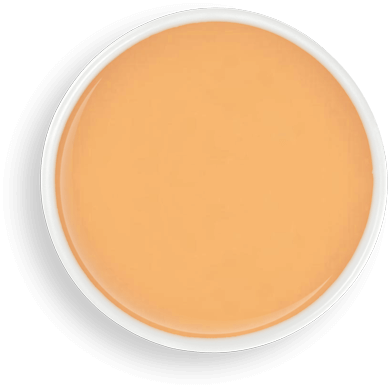
Tastes
Rich.
Creamy.
Ambrosial.
Indulgently creamy, full-bodied, robust black tea, finished with fragrant notes of cardamom.
Experience It
Morning, Noon & Early Afternoon.
Hot or Iced. Milky & Sweet.
Solo or With Your Fav Treat.
Best Enjoyed
Hot, sweet, and extra creamy! Even tea purists must admit that Doodh Patti Chai shines when prepared the traditional way, with your favourite milk and sweetener. You’ll be amazed at how these simple additions elevate the sensorial experience.
Best Served
Traditional street Doodh Patti Chai is served in glass, stainless steel or clay cups. However, in the homes, decorative porcelain teacups are favoured. So, feel free to use your favourite teacups, or if you have guests to impress, your finest china on a decorative tea tray. The comforting scent of cardamom is also extra soothing when its rising from the depths of the mug you love most.
Pairs With
Pakistani Chai’s fragrant creaminess is so indulgent it’s a treat on its own. However, it’s extra-heavenly when paired with traditional street foods. Paratha (crispy pancake) and baaqar khani (spiced puffed pastry biscuit) make for excellent breakfast accompaniments. Later in the day, try chicken puff pastries, samosas, shaami kebabs (deep fried spiced meat or vegetable patties), or pakoras. For a sweet treat, pair it with the nutty pudding-like gajar ka halva or naan khatai (traditional shortbread cookies). Nimko (deep-fried savoury and spiced snack mixes, like Bombay mix) are also popular in Pakistan. Doodh Patti Chai will also pair wonderfully with your favourite bickie, cake, or treat!
Tea Time
Life and chai go hand-in-hand in Pakistan. Tea stalls abound all throughout the country, and for Pakistanis, all times are tea time. Consider holding back in the evening if you’re caffeine sensitive as evening chai can be a commitment to staying up late!
Caffeine Level
High
For a shot of vitality
Taste Strength
Strong
Known For
Clear Focus. Digestion. Replenishment
Brewing Guide
Brew It the Simple Way
-
Leaf
½ – 1 tsp
-
Liquid
250 ml (8.5 fl oz)
-
Method
Stovetop brew
-
Temp
Rolling boil
-
Time
3 – 5 min
To Make 1 Cup:
- Add 1 cup (250 ml / 8.5 fl oz) of milk to a saucepan plus a splash of water.
- Add ½ – 1 tsp of tea.
- Simmer uncovered on low heat for 3 – 5 min.
- Stir occasionally.
- Strain into cup.
- Sweeten to taste.
This Brewing Guide details how we recommend brewing your chai. But taste is a very personal thing, and we all have our own quirks and preferences. So feel free to experiment and have fun finding your tea brewing groove! You can then refer back to this Brewing Guide anytime you want a refresher on the best tools to use, the ideal brewing method, the magic leaf-to-liquid ratio, and the perfect water temperature and brewing time.
Brew It the Traditional Pakistani Way
Treat yourself to a rich tapestry of flavours and aromas by learning the traditional brewing method for your Pakistani Chai.
-
Leaf
½ – 1 tsp
-
Liquid
250 ml (8.5 fl oz)
-
Method
Stovetop brew
-
Temp
Rolling boil
-
Time
≈ 5 min
Tea Tools
All the specialised utensils you’ll need for the traditional brew:
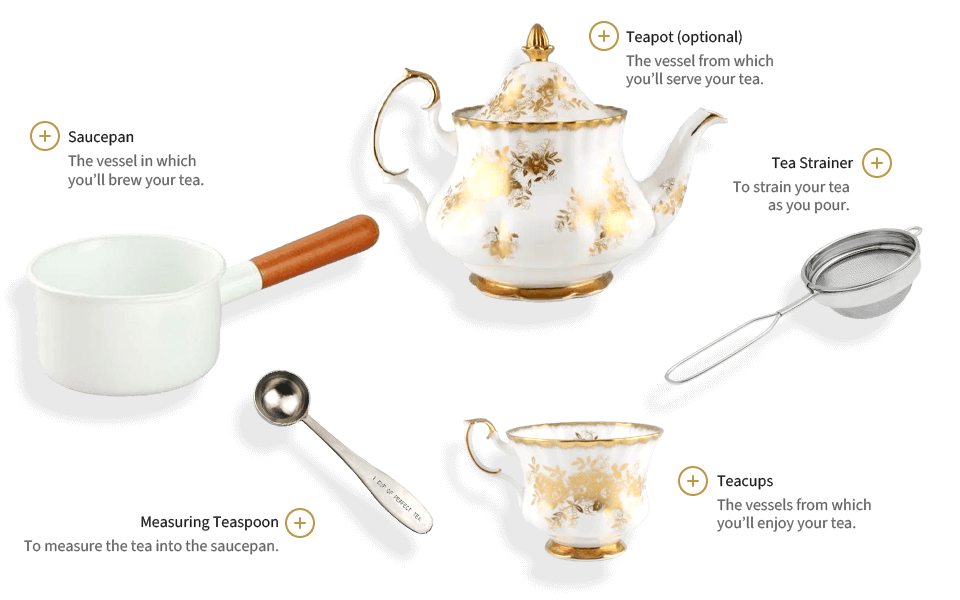
-
Measure
Depending on how strong you like your brew, you will need ½ – 1 tsp of tea per cup (250 ml / 8.5 fl oz) of milk plus a splash (around 1 tbsp) of water.
Traditionally, Pakistani Chai (Doodh Patti) is brewed in pure milk, and you should feel free to use whichever dairy or plant-based milk works for you.
Note: The splash of water is recommended to prevent the milk from burning and giving the tea an unpleasant flavour.
For best results, use freshly drawn ambient filtered water.
-
Brew
Add the all-important splash of water to your saucepan, followed by the milk. Tip: adding the splash of water first is the best way to prevent the milk from sticking to the bottom of the saucepan and burning.
Next, add the tea to the saucepan. If sweetening with sugar, add it at this point so it can simmer with the tea to create greater depths of flavour.
Simmer uncovered on low heat for 2 – 3 min or until the tea starts to gently bubble and rise and the aroma of cardamom fills the air. Tip: the more gently Doodh Patti Chai is brewed, the better the flavour extraction will be, so this is a wonderful opportunity to take your time and enjoy the meditative process of brewing tea.
Stir occasionally to prevent the tea from sticking to the bottom of the saucepan and burning. Once the tea starts to rise, give a quick stir to prevent it from overflowing, and continue simmering for another 1 – 2 min. You’ll know the brew is ready when you see it develop a creamy brown hue. Tip: these final minutes after the brew rises are crucial as this is when most of the delectable Doodh Patti Chai flavours are released.
-
Serve
Whether you’re enjoying tea alone or with friends, you can pour directly into the teacups or transfer the brew to a teapot first. Either way, it’s best to strain it through a mesh strainer to prevent the tea leaves from flowing out. Using the back of a spoon, squeeze the tea leaves in the strainer to extract as much tea as possible. If sweetening with honey or any sweetener other than sugar, now is the time to add the desired amount.
Note: The broken black tea leaves of this Pakistani Chai blend can be quite small and may be able to pass through a standard mesh tea strainer. If this occurs, the longer the tea leaves are in contact with the tea, the stronger and more astringent (even bitter) the tea can become. To avoid this, try to use a fine mesh strainer. If you don’t have one, try using a cotton sieve or some cheese cloth to strain the tea.
-
Drink
If you are drinking from a traditional handle-less cup, hold the rim with your thumb and index finger. Not only is this the traditional way, but it is also the best method for ensuring you do not burn your fingers.
Before taking your first sip, savour the aroma of the tea in the teacup to experience greater depths of flavour. The brew may be piping hot, so make your first sip small and take it slow, testing the temperature of the brew so that you don’t burn yourself. If you’re not in a rush, you can also let your brew cool for a while as you savour its comforting aroma, building up anticipation for that first satisfying sip.
This Brewing Guide details how we recommend brewing your chai. But taste is a very personal thing, and we all have our own quirks and preferences. So feel free to experiment and have fun finding your tea brewing groove! You can then refer back to this Brewing Guide anytime you want a refresher on the best tools to use, the ideal brewing method, the magic leaf-to-liquid ratio, and the perfect water temperature and brewing time.
Brew It the Chilled-Out Way
To enjoy this tea iced, simply follow the Quick Brew steps, adjusting the leaf-to-milk ratio based on the volume of your cup, glass jug, or pitcher. After straining, cool the tea uncovered so it reaches room temperature faster. Serve chilled over ice.
Tips
If you wish to make the tea sweet, it’s best to add your desired sweetener after straining but while the brew is still hot. This ensures it’s able to fully dissolve and beautifully sweeten your tea.
Ice is infamous for diluting drinks, but you can harness its power to water things down by brewing your tea a little stronger than you otherwise would. To get it just right, try doubling the tea leaf quantity provided under Quick Brew. You many need to experiment a little to find your perfect balance.
This Brewing Guide details how we recommend brewing your chai. But taste is a very personal thing, and we all have our own quirks and preferences. So feel free to experiment and have fun finding your tea brewing groove! You can then refer back to this Brewing Guide anytime you want a refresher on the best tools to use, the ideal brewing method, the magic leaf-to-liquid ratio, and the perfect water temperature and brewing time.


